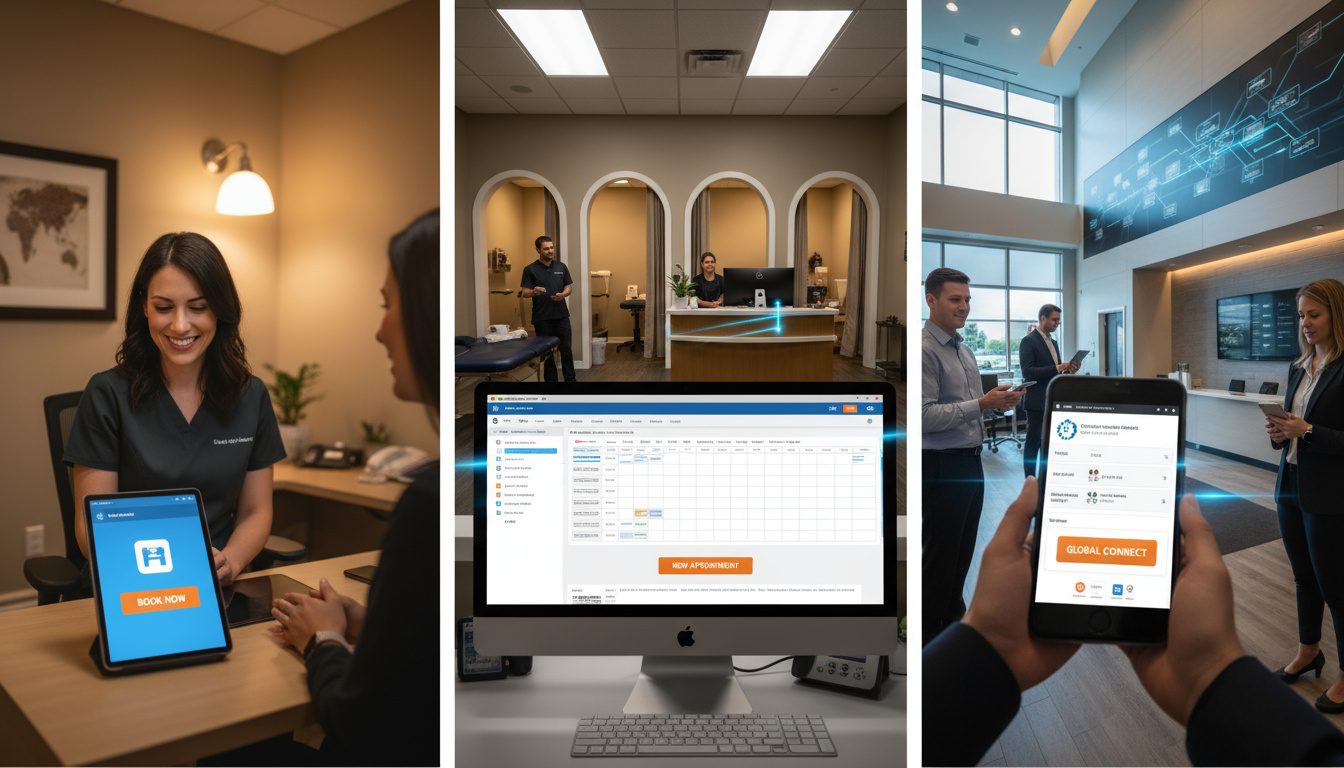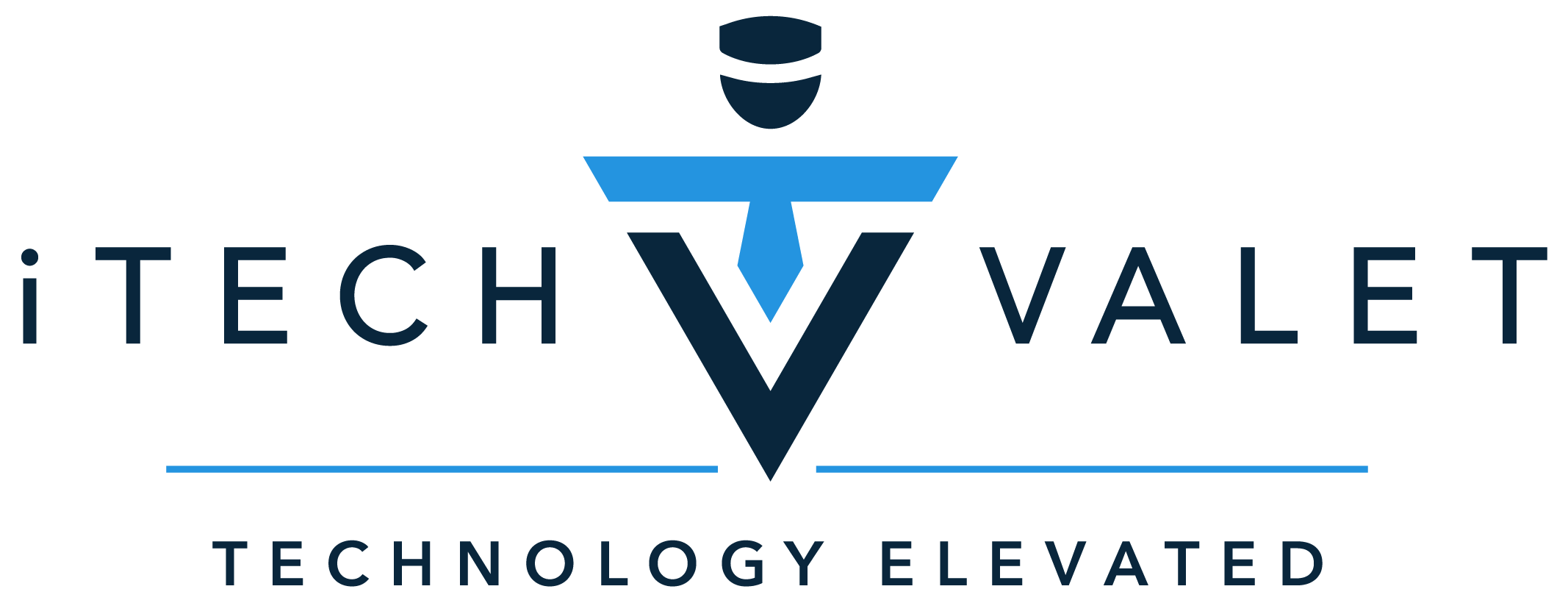
What's the Best CRM Software for Small Chiropractic Practices? (2025 Comparison)
![]() by Gerek Allen ~ Last Updated: Oct 28, 2025 ~ 8 Min Read
by Gerek Allen ~ Last Updated: Oct 28, 2025 ~ 8 Min Read
![]() by Gerek Allen
by Gerek Allen
~ Last Updated: Oct 28, 2025 ~
~ 8 Min Read ~
For solo practitioners or small practices with 1-3 chiropractors, your best options are **ChiroFusion ($129/month), ClinicSense ($39-99/month), or SimplePractice ($24.50/month)**. Each platform excels in different areas based on your specific needs.
ChiroFusion provides the best balance of chiropractic-specific features and affordability, with integrated scheduling, SOAP note templates, and billing tools designed specifically for chiropractic workflows. ClinicSense excels at appointment management for high-volume practices seeing 30-50 patients daily, with superior automated reminders and family account management. SimplePractice offers the easiest implementation with powerful tools and minimal learning curve, ideal if you prioritize user experience and don't need extensive chiropractic-specific templates.
The decision comes down to three factors: how much it costs, how long it takes to learn, and whether it actually drives results. Most chiropractors have hundreds of former patients sitting in spreadsheets or old software systems who never receive follow-up communication. **A CRM turns that forgotten patient list into a revenue-generating asset** through automated email campaigns, appointment reminders, and systematic reactivation sequences.
For a detailed breakdown of all chiropractic CRM options with complete features and pricing, check out our comprehensive chiropractic CRM software reviews for 2025.
What Is a CRM and Why Should Chiropractors Actually Care?

CRM stands for Customer Relationship Management. In a clinical setting, think of it as Patient Relationship Management software.
Here's what most chiropractors don't realize.
You've been collecting patient contact information for years, maybe decades. Names, emails, phone numbers, birthdays, referral sources, treatment history. That data sits somewhere doing absolutely nothing for your practice.
A CRM takes that information and turns it into a system that works for you 24/7. It tracks every patient interaction, sends automated appointment reminders, follows up with people who missed appointments, and nurtures leads who aren't ready to book yet.
But here's the real value most chiropractors miss: a CRM helps you stay in touch with former patients who stopped coming in. Maybe they moved. Maybe their insurance changed. Maybe they just got busy and forgot about maintenance care.
Without a system, those people disappear forever.
With a CRM, you can send them a birthday email, a quarterly newsletter, or a reactivation campaign that brings them back. That's the difference between hoping patients remember you exist and systematically staying top-of-mind so they return when pain strikes or they're ready for wellness care again.
What Chiropractors Actually Need in a CRM System

Before you look at specific platforms, you need to know what actually matters for your practice. Not fancy features you'll never use. The stuff that saves you time, makes you money, and doesn't require a computer science degree to operate.
Here's what matters most, based on what chiropractors are actually using successfully.
Cost and ROI Reality
Let's be honest about money first.
Basic CRM software starts around $25-40/month for solo practitioners. Mid-range chiropractic-specific platforms run $129-159/month. Comprehensive systems with all the bells and whistles can hit $200+/month when you add integrations and extra users.
Here's the ROI math that matters: if your CRM brings back just 2-3 former patients per month who book a series of adjustments, it pays for itself. If it prevents 5-10 no-shows monthly through automated reminders, you just recovered the cost. If it nurtures leads who aren't ready to book immediately and converts them 90 days later, you're now making money.
The question isn't "how much does it cost?"
The question is "how many patients am I losing right now because I don't have a system tracking everything?"
Learning Curve and Time Investment
You don't have time to spend 40 hours learning complicated software. Neither does your front desk staff.
User-friendly platforms like SimplePractice or ActiveCampaign can be learned in 1-2 weeks with daily use. You'll be functional on day one, proficient within a week, and maximizing features within a month.
Chiropractic-specific systems like ChiroFusion or ChiroTouch take 2-4 weeks for full proficiency because they have more specialized features. The learning curve is steeper, but the trade-off is having chiropractic workflows built into the system instead of customizing everything yourself.
Here's what actually determines success: consistent daily use.
The CRM only works if your team actually logs patient interactions, tracks referral sources, and follows the automated workflows. Most practices that fail with CRMs don't fail because the software is bad. They fail because nobody uses it consistently.
Ease of Use for Daily Operations
The best CRM is the one your staff will actually use every single day without complaining.
Look for platforms with clean, intuitive interfaces. If it takes 7 clicks to schedule an appointment or log a phone call, your team won't do it. If the dashboard is cluttered with features you'll never use, it creates confusion and resistance.
SimplePractice and Jane excel here because they're designed around user experience first. Everything is where you expect it to be. Chiropractic-specific platforms like ChiroFusion balance industry features with usability, though they're naturally more complex because they're handling clinical documentation, insurance billing, and patient management in one system.
Test this during free trials: have your front desk person actually use the software for a full day. If they're frustrated or confused, move on. If they say "this is way easier than what we're using now," you found your answer.
Will It Actually Work for Your Practice?
This is the question that matters most, and it depends entirely on what you're trying to accomplish.
If you want to reactivate former patients and build an email marketing system, a platform like ActiveCampaign will work great for $29-149/month. But it won't handle your clinical documentation or insurance billing.
If you need an all-in-one system that manages appointments, SOAP notes, billing, and patient communication, you need a chiropractic-specific platform like ChiroFusion, ChiroTouch, or Genesis.
If you're primarily focused on scheduling and appointment management for a high-volume practice, ClinicSense is purpose-built for exactly that scenario.
The platforms work. The question is whether you're choosing the right tool for the specific job you need done.
The Best CRM Software for Chiropractors: Deep Comparison

Let's get into the actual platforms. I'm focusing on 5-7 options that real chiropractors are using successfully, including both chiropractic-specific systems and marketing-focused CRMs that work well when paired with your existing clinical software.
ChiroFusion: Best All-Around for Small to Medium Practices
ChiroFusion understands that most chiropractic practices don't need enterprise-level complexity. They need solid practice management tools that actually fit how chiropractors work day-to-day.
What makes ChiroFusion worth the investment is its focus on simplicity without sacrificing important features. You get web-based access from any device, chiropractic-specific templates for documentation, integrated billing that understands your procedure codes, and patient scheduling that handles recurring maintenance visits easily.
The platform excels for practices that want one system handling everything: clinical documentation, scheduling, billing, and basic patient communication. You're not cobbling together multiple tools. Everything talks to each other because it's all in one place.
Cost: $129/month
Learning Curve: 2-3 weeks for full proficiency
Best For: Solo chiropractors or small practices (2-4 practitioners) who want chiropractic-specific features without enterprise pricing
The downside? It doesn't have the advanced marketing automation of dedicated CRM platforms like ActiveCampaign, and the reporting features are basic compared to larger competitors. But for most small practices, that trade-off is worth the affordable pricing and user-friendly interface.
ClinicSense: Best for High-Volume Scheduling
If your practice lives or dies by your appointment schedule, ClinicSense is worth serious consideration.
The platform is built around the reality that many chiropractors see patients multiple times per week and need scheduling systems that handle complex recurring appointments, family scheduling, and last-minute changes without creating chaos.
ClinicSense excels at automated reminders that significantly reduce no-shows. **For practices seeing 30-50 patients daily, preventing just 3-5 no-shows per week pays for the software and then some.** The system also handles family accounts beautifully, making it easy to coordinate care for households where multiple people receive treatment.
Cost: $39-99/month
Learning Curve: 1-2 weeks
Best For: High-volume practices with complex scheduling needs and multiple family accounts
The limitation is that ClinicSense focuses heavily on scheduling and appointment management. If you need robust CRM features for email campaigns and patient reactivation, or comprehensive insurance billing tools, you'll need to supplement it with other software.
SimplePractice: Best for Easy Implementation
SimplePractice lives up to its name. If you want powerful tools without overwhelming complexity, this is your platform.
What makes SimplePractice appealing is that your staff can learn it quickly and patients actually enjoy using it. The interface is clean, intuitive, and gets out of your way so you can focus on patient care instead of fighting with software.
The platform handles everything from initial patient inquiries through ongoing care management. The telehealth integration is seamless, making it easy to offer virtual consultations for movement assessments or follow-up care. The client portal encourages engagement by giving patients easy access to care plans and communication with your practice between visits.
Cost: Starts at $24.50/month
Learning Curve: 1 week
Best For: Practices that want comprehensive features with minimal learning curve, especially if telehealth is important
The trade-off? SimplePractice isn't designed specifically for chiropractic practices, so you won't get chiropractic-specific SOAP note templates or specialized billing workflows out of the box. It works great for cash-based practices or those with simple billing needs, but complex insurance billing might require customization.
ActiveCampaign: Best for Marketing and Patient Reactivation
Here's where things get interesting.
ActiveCampaign isn't a practice management system. It's a marketing automation platform. But for chiropractors sitting on a list of hundreds of former patients who never hear from you? This is the secret weapon.
ActiveCampaign excels at email automation, list segmentation, and creating systematic campaigns that keep your practice top-of-mind. You can segment your patient list by conditions treated, services received, or how long since their last visit, then send targeted campaigns to each group.
Here's what this looks like in practice.
Every patient who hasn't been in for 90 days automatically gets added to a reactivation sequence that sends them 3-4 emails over 6 weeks. Educational content about maintenance care, a special offer to come back, and a final "we miss you" message. No manual work required. The system runs 24/7.
You can also build email newsletters, birthday campaigns, referral request sequences, and educational drip campaigns that position you as the go-to expert in your community. **This is how you turn a forgotten patient list into predictable revenue.**
Cost: $29-149/month depending on list size
Learning Curve: 2-3 weeks to build effective campaigns
Best For: Practices with large patient lists (500+) who want aggressive reactivation and email marketing, and already have clinical documentation handled through separate software
The limitation is obvious: ActiveCampaign doesn't handle clinical documentation, scheduling, or insurance billing. You'll use it alongside your existing practice management software, not instead of it. But if you're specifically trying to solve the "we have hundreds of former patients we never contact" problem, this is the solution.
ChiroTouch: Best for Practices Ready to Scale
ChiroTouch is specifically built for chiropractic practices with serious growth ambitions. If you're seeing 40+ patients daily or planning to add associate doctors, ChiroTouch provides the infrastructure to scale systematically.
The platform combines patient management, clinical documentation, and business operations into one comprehensive system. The Rheo AI assistant learns your documentation patterns and speeds up note-taking significantly, which matters when you're seeing high patient volumes.
What separates ChiroTouch from cheaper alternatives is depth. **Robust reporting shows you exactly which services are most profitable, which marketing channels drive the best patients, and where operational bottlenecks exist.** The compliance tracking helps multi-provider practices maintain consistent documentation standards.
Cost: Starts at $159/month
Learning Curve: 3-4 weeks for full proficiency
Best For: Established practices with 2+ providers, high patient volume, or aggressive growth plans
The downside is cost. ChiroTouch has frequent price increases and many features cost extra per month. For smaller practices on tight budgets, the investment might be hard to justify. But for practices doing $500k+ annually in revenue, the operational efficiency and business intelligence justify the premium pricing.
Jane: Best Patient Experience
Jane was created by healthcare practitioners who understand what patients actually want: easy online booking, clear communication, and a healthcare experience that doesn't feel stuck in 1995.
The platform makes it incredibly easy for patients to book appointments, complete intake forms, and stay engaged with their care. Chiropractors can send exercise instructions, posture tips, and educational content between visits, supporting the holistic approach many chiropractic patients seek.
The template library is extensive, with thousands of forms and documents you can customize. The telehealth capabilities work seamlessly for follow-up consultations or exercise instruction without requiring in-office visits.
Cost: $54-99/month per practitioner
Learning Curve: 1-2 weeks
Best For: Practices that prioritize patient experience and want modern, user-friendly tools for patient engagement
Jane may require some customization for chiropractic-specific workflows since it's not exclusively built for chiropractors. But if patient experience is your competitive advantage and you want software that makes your practice feel modern and accessible, Jane delivers.
Nimble: Best for Community-Based Relationship Building
Nimble takes a different approach entirely. It's not healthcare-specific software. It's a relationship-first CRM that can be valuable for chiropractors who understand that patient relationships are the foundation of practice success.
For chiropractors who are active in their communities, leverage social media for practice growth, and build extensive referral networks, Nimble provides tools to track interactions across multiple channels and maintain meaningful relationships with patients, referral sources, and community partners.
The platform excels at helping you remember important details about patients' lives, track referral sources, and follow up with prospects who aren't ready to start care. The social media integration shows you patient activity across platforms, giving you natural opportunities to engage and stay top-of-mind.
Cost: $24.90/month per user
Learning Curve: 1-2 weeks
Best For: Chiropractors focused on relationship-driven marketing, community engagement, and referral network development
The critical limitation: Nimble doesn't have EHR functionality, HIPAA compliance features, or healthcare-specific workflows. You'll use it alongside your clinical documentation system as a marketing and relationship tool, not a complete practice management solution. But if you're specifically trying to build deeper relationships and leverage your network for growth, Nimble provides tools most chiropractic software doesn't offer.
How to Actually Choose the Right CRM for Your Practice

Reading comparisons is helpful, but here's the framework for making your final decision based on your specific situation.
First, answer these four questions honestly:
- How many providers do you have right now, and what are your growth plans for the next 12 months?
- Do you need integrated clinical documentation and insurance billing, or are you primarily solving for patient communication and marketing?
- What's your realistic monthly budget, including time investment for implementation?
- What's the biggest problem you're trying to solve? (No-shows? Lost patients? Poor follow-up? Disorganized data?)
Your answers determine your path.
If you're a solo practitioner or small practice (1-3 doctors) primarily needing better organization and patient management, start with ChiroFusion or SimplePractice. They balance features with affordability and won't overwhelm your team.
If you're running a high-volume practice where scheduling chaos is costing you revenue, ClinicSense solves that specific problem better than anyone.
If you have a large list of former patients (500+ contacts) you never market to, start with ActiveCampaign to turn that list into revenue while continuing to use your current system for clinical operations.
If you're an established practice with serious growth ambitions, multiple providers, or complex operational needs, invest in ChiroTouch despite the higher cost. The operational efficiency and business intelligence justify the premium.
If patient experience is your competitive advantage and you want software that makes your practice feel modern, Jane delivers that better than chiropractic-specific alternatives.
Take the Free Trial Seriously
Every platform mentioned offers free trials or demos. Use them strategically.
Don't just click around the interface for 10 minutes and call it good. Actually use the software for a full week like you would in real practice. Have your front desk person schedule appointments, send reminders, and log patient interactions. Try building a simple email campaign if marketing features matter to you.
The trial reveals friction points that reviews can't capture. Maybe the scheduling system requires too many clicks. Maybe the interface confuses your staff. Maybe the features you thought you needed don't actually matter in daily operations.
If the software feels natural after a week of real use, that's your signal. If your team is frustrated or resisting, move on regardless of how good the features look on paper.
Ask the Right Questions Before You Commit
When you're on a demo call or evaluating platforms, have these questions ready:
What's the total cost including setup fees, training, and any hidden charges?
What does data migration look like if I'm switching from another system?
What training and ongoing support do you provide, and what are your support hours?
Do I own my data, and how do I export it if I decide to leave?
What's the typical contract length and cancellation policy?
How often do prices increase, and what's your historical track record?
The support question matters more than most chiropractors realize. Send the support team a question before you commit and see how quickly and thoroughly they respond. Good support is priceless when you hit issues, so verify they're responsive and helpful from the beginning.
Frequently Asked Questions About CRM Software for Chiropractors

What's the best CRM software for a solo chiropractor or small practice?
For solo practitioners or small practices (1-3 chiropractors), the best options are ChiroFusion ($129/month), ClinicSense ($39-99/month), or SimplePractice ($24.50/month).
ChiroFusion offers the best balance of chiropractic-specific features and affordability. You get integrated scheduling, SOAP note templates, billing tools, and patient communication in one system designed specifically for how chiropractors work.
ClinicSense excels at appointment management for high-volume practices. If you're seeing 30-50 patients daily and scheduling complexity is your biggest pain point, ClinicSense solves that problem at the lowest price point.
SimplePractice is ideal if you want powerful tools without complexity and don't need extensive chiropractic-specific templates. It's the easiest to learn and offers the best patient portal experience, though you'll need to customize workflows for chiropractic-specific needs.
The decision comes down to your priority: chiropractic-specific features (ChiroFusion), scheduling management (ClinicSense), or ease of use with great patient experience (SimplePractice).
What even is a CRM and why do I need one for my chiropractic practice?
CRM stands for Customer Relationship Management, but for chiropractors it's better thought of as Patient Relationship Management. It's software that tracks every interaction with your patients, automates follow-ups, and ensures no one falls through the cracks.
Most chiropractors have hundreds of former patients who stopped coming in and never received a single follow-up email, birthday message, or reactivation campaign. That patient list is sitting in a spreadsheet or old software doing absolutely nothing for your practice.
A CRM turns that forgotten list into a revenue-generating asset. It automatically sends appointment reminders that reduce no-shows. It nurtures leads who aren't ready to book yet through educational email sequences. It tracks referral sources so you know which marketing channels actually work. It segments patients by condition or treatment history so you can send targeted campaigns.
Without a CRM, you're relying on memory and manual effort to stay in touch with patients. With a CRM, the system works for you 24/7, automatically following up and keeping your practice top-of-mind so patients return when they experience pain or want maintenance care.
If your CRM brings back just 2-3 former patients per month who book treatment series, it pays for itself. Everything beyond that is profit.
How much does CRM software actually cost for a chiropractic practice?
Basic CRM software for chiropractors starts at $25-40/month for solo practitioners. Mid-range chiropractic-specific platforms like ChiroFusion run $129/month. Comprehensive systems like ChiroTouch start at $159/month but often increase with add-on features.
Marketing-focused CRMs like ActiveCampaign cost $29-149/month depending on your contact list size. The more patients you have in your database, the higher the monthly cost.
But here's the real cost most chiropractors miss: implementation time and training. Budget for 2-4 weeks of reduced productivity while your team learns the system and builds workflows. Factor in any data migration costs if you're switching from another platform.
The ROI timeline is typically 3-6 months. Month one is learning and setup. Months 2-3 are building automation and getting consistent usage. Months 4-6 are where results start compounding as automated follow-ups bring back former patients and prevent no-shows systematically.
If you're only looking at the monthly subscription cost, you're missing the real investment. The question isn't "how much does it cost?" The question is "how many patients am I losing right now because I don't have a system tracking everything?"
How long does it take to learn and actually use a new CRM system?
User-friendly platforms like SimplePractice or ActiveCampaign can be learned in 1-2 weeks with daily use. You'll be functional on day one, proficient within a week, and maximizing features within a month.
Chiropractic-specific systems like ChiroFusion or ChiroTouch typically require 2-4 weeks for full proficiency because they have more specialized features. The learning curve is steeper, but the trade-off is having chiropractic workflows built into the system instead of customizing everything yourself.
But here's what actually determines success: consistent daily use. The learning curve isn't the problem. The problem is whether your team actually uses the CRM every single day to log patient interactions, track referral sources, and follow the automated workflows.
Most practices that fail with CRMs don't fail because the software is too complicated. They fail because nobody uses it consistently. The system sits there with half-entered data, automated campaigns that never got built, and a team that defaults back to old habits.
Implementation success requires accountability. Assign someone on your team to own the CRM rollout. Have daily check-ins during the first two weeks to troubleshoot issues. Build usage into job expectations. Make it clear that logging patient interactions isn't optional.
The CRM only works when your team actually uses it systematically. Software doesn't fail. Implementation fails.
Should I use a chiropractic-specific CRM or a general marketing CRM?
Use a chiropractic-specific CRM if you need integrated clinical documentation, SOAP notes, insurance billing, and HIPAA-compliant patient portals all in one system. Platforms like ChiroFusion, ChiroTouch, or Genesis handle your entire practice operations from scheduling through billing.
Use a marketing-focused CRM like ActiveCampaign if you primarily need email automation, patient reactivation campaigns, and list segmentation, while handling clinical documentation through separate EHR software you already use.
Many successful practices use both: a chiropractic platform for clinical operations (appointments, SOAP notes, billing) and a marketing CRM for patient communication and reactivation campaigns. This approach lets you use purpose-built tools for each function instead of compromising on either.
The decision framework is simple. If you're starting from scratch or unhappy with your current all-in-one system, choose a chiropractic-specific platform that handles everything. If you already have clinical documentation software you like but terrible patient communication and marketing, add ActiveCampaign to handle that specific gap. If you're a cash-based practice with minimal insurance billing, a user-friendly platform like SimplePractice plus ActiveCampaign might be perfect.
Don't force yourself into one category. Choose the tools that solve your specific problems, even if that means using two systems that talk to each other through integrations.
What's the biggest mistake chiropractors make with their patient list?
The biggest mistake is having a list of hundreds of former patients and never contacting them.
Most chiropractors collect patient information for years, maybe decades. Names, emails, phone numbers, birthdays, referral sources, treatment history. That data sits in a spreadsheet or old software system doing absolutely nothing.
No birthday emails. No quarterly newsletters. No reactivation campaigns. No educational content about maintenance care. No special offers to come back. Nothing.
Those former patients aren't gone forever. They're just waiting for a reason to think about your practice again. Maybe they moved and need a new chiropractor. Maybe their insurance changed and they can afford care now. Maybe they just got busy and forgot about maintenance visits.
A CRM automates systematic follow-up that keeps your practice top-of-mind. Even a simple monthly newsletter generates results. Birthday emails with special offers bring patients back. Automated reactivation sequences for patients who haven't been in 90+ days recover lost revenue on autopilot.
Here's the math: if you have 500 former patients in your database and you implement a simple reactivation campaign, you'll typically bring back 5-10% (25-50 patients) over 6 months. If each patient books 4-6 visits at $60 per visit, that's $6,000-$18,000 in recovered revenue from patients who were already in your database.
That patient list isn't worthless. You just haven't activated it yet. A CRM is how you turn dormant data into predictable revenue.
Next Steps: Turning Your Patient List Into Revenue
Here's what to do right now.
First, export your current patient list. Whether it's in spreadsheets, old software, or filing cabinets, get all that contact information into one place. You need to know exactly how many former patients you have and when they last visited.
Second, decide which type of CRM matches your biggest need. If you need full practice management (scheduling, SOAP notes, billing), choose ChiroFusion, SimplePractice, or ChiroTouch. If you specifically want to reactivate former patients through email marketing, start with ActiveCampaign.
Third, commit to a 90-day implementation plan. Weeks 1-2: Training and setup. Weeks 3-4: Build automated workflows and import patient data. Weeks 5-12: Consistent daily use and refinement. Results compound after month three when automation is running systematically.
Don't overthink this.
The "perfect" CRM doesn't exist. The best CRM is the one your team will actually use consistently. Choose one, commit to implementation, and give it 90 days of real effort before you judge results.
Your patient list is an asset you've been ignoring for years. A CRM is how you finally activate it.
Want to see how your website stacks up against competitors and what's actually driving patients away? Get a free website reality check with 3 actionable insights delivered in 24 hours. We'll show you exactly what's broken and how to fix it.

Gerek Allen
Co-Owner iTech Valet
Entrepreneur, patriot, CrossFit junkie, IPA enthusiast, loves to travel to tropical destinations, and knows way too many movie quotes.
About iTech Valet
iTech Valet specializes in web design and content marketing for online entrepreneurs who want to share their expertise.
Services Include:
- Web Design
- Graphic Design
- Sales Copy
- Funnel Building
- Authority Sites
- Membership Sites
- Course Creation
- Email Systems
- Content Marketing
- Competitive Analysis
- Tech Integrations
- Strategic Planning






